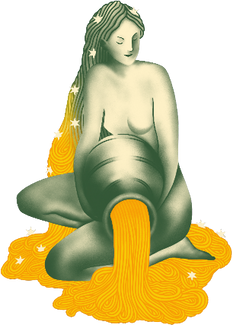This unique sculpture is a symbol of Sicily.
If you watched the second season of The White Lotus, you might have noticed an unusual sculpture popping up in some of the show’s stunning scenes of Sicily. A two-faced motif—one masculine, with a sweeping mustache and turban, and one feminine—adorns ceramic planters across the island, often brightly painted and adorned with fruits or flowers.
The testa di moro (“moor’s head”) is a traditional symbol of luck found across Sicily. Its origin is a folk tale from the time of the Arab occupation of Sicily more than a thousand years ago. The two faces represent a pair of doomed lovers—one from North Africa, one a native Sicilian, who fall in love on the island. As with many Italian folk tales, the story varies depending on where you are and who you ask, but in each one their different backgrounds are the cause of serious strife. If Romeo & Juliet, based in Verona, are the northern Italian tale of star-crossed lovers, the two figures on the testa di moro are southern Italy’s version.
The version of the story that appears in Boccaccio’s Decameron takes place in Messina, a town on the northeast coast of the island. A young girl named Isabella falls in love with the penniless Lorenzo, who works for her family. When her brothers find out about their love, they decide to kill Lorenzo and hide his body to avoid staining their noble family’s reputation. Isabella is so heartbroken that she sneaks out one night, uncovers the body, and removes the head to keep a part of him with her forever. She plants her basil in it, and the basil flourishes as it is watered with her tears.

Black Moor's Head Olive Oil
In Palermo, they say that a young Sicilian girl was out on her balcony when a North African man (in those days referred to as a moor) was passing below. It was love at first sight, and he began courting her, visiting her home and swearing his devotion daily. But their romance ended when she learned that he was soon to leave Sicily and return to his home, where he already had a wife and family. In a jealous rage, she cut off his head that night while he slept, so that she could keep him with her forever. This time, she puts the head on her balcony to show off her victory, and the basil that grows in it makes her the envy of the neighborhood. Her neighbors began to craft their own, less violent versions of the head to use as planters, and the ceramic tradition was born.
Sicilian identity is a special blend of cultures thanks to its unique place perched between Italy and North Africa in the Mediterranean. It has been home to a number of world cultures over the centuries—including Greek, Spanish, Arab, and more—and each has left their mark on the island in its architecture, art, and food. In addition to this slightly gruesome story, the mark of the Arab presence in Sicily can be tasted in the island’s most prized crops: pistachios, almonds, and saffron. We were thrilled when we found another Sicilian staple, olive oil, packaged in bottles that artfully use the testa di moro motif. Now you can own your own taste of local folklore—no violence required!















0 comments